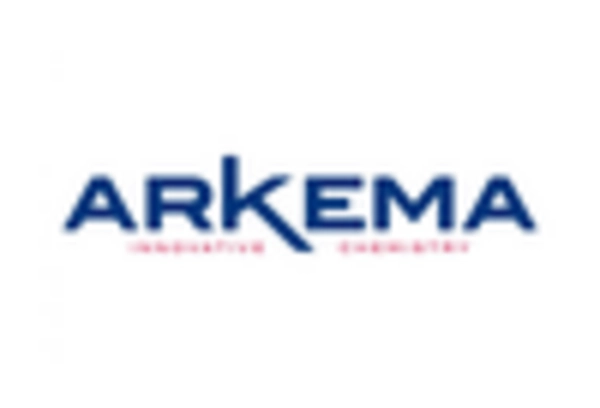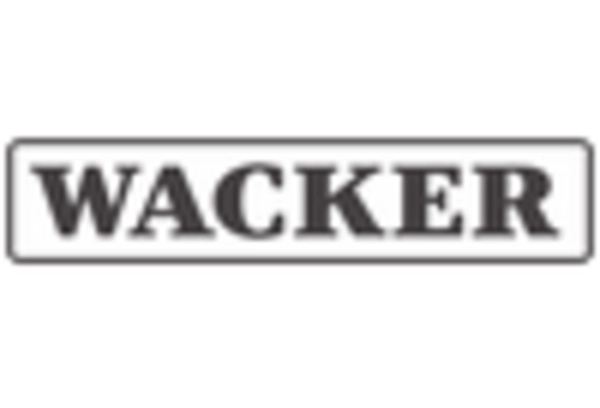Expansion of End-Use Industries
The expansion of end-use industries such as automotive, packaging, and textiles is driving growth in the organic binders market. As these industries increasingly adopt sustainable practices, the demand for organic binders is expected to rise. For example, the automotive sector is integrating bio-based binders into manufacturing processes to enhance sustainability. This trend is reflected in market forecasts, which suggest that the organic binders market could see a growth rate of around 10% annually through 2025. The organic binders market is thus well-positioned to leverage this expansion, as diverse applications continue to emerge across various sectors.
Growth in Construction Activities
The organic binders market is benefiting from the robust growth in construction activities across the United States. With an increasing number of infrastructure projects and residential developments, the demand for construction materials, including organic binders, is on the rise. According to recent data, the construction sector is expected to grow by approximately 5% annually, which directly correlates with the demand for organic binders used in adhesives, coatings, and sealants. The organic binders market is thus poised to capitalize on this growth, as builders and contractors seek sustainable options that align with modern construction practices.
Innovations in Product Development
Innovations in product development are significantly influencing the organic binders market. Companies are investing in research and development to create advanced formulations that enhance performance while maintaining eco-friendliness. For instance, the introduction of bio-based binders derived from renewable resources is gaining traction. This innovation not only meets the demand for sustainable materials but also improves product characteristics such as adhesion and durability. The organic binders market is likely to see a shift towards these innovative solutions, which could potentially capture a larger market share, estimated to be around 30% of the total market by 2025.
Rising Demand for Eco-Friendly Products
The organic binders market is experiencing a notable surge in demand driven by the increasing consumer preference for eco-friendly products. As awareness of environmental issues grows, consumers are gravitating towards sustainable alternatives in various sectors, including construction, packaging, and textiles. This shift is reflected in market data, indicating that the organic binders market is projected to reach approximately $1.5 billion by 2026, growing at a CAGR of around 8% from 2021 to 2026. The organic binders market is thus positioned to benefit from this trend, as manufacturers adapt their offerings to meet the rising expectations for sustainability and environmental responsibility.
Increased Regulatory Support for Sustainable Materials
Regulatory support for sustainable materials is playing a crucial role in shaping the organic binders market. Government initiatives aimed at reducing carbon footprints and promoting environmentally friendly products are encouraging manufacturers to adopt organic binders. Policies that incentivize the use of bio-based materials are becoming more prevalent, which could lead to a significant increase in market penetration. The organic binders market is likely to benefit from these regulations, as compliance with environmental standards becomes a priority for businesses, potentially increasing market growth by an estimated 15% over the next five years.

















Leave a Comment